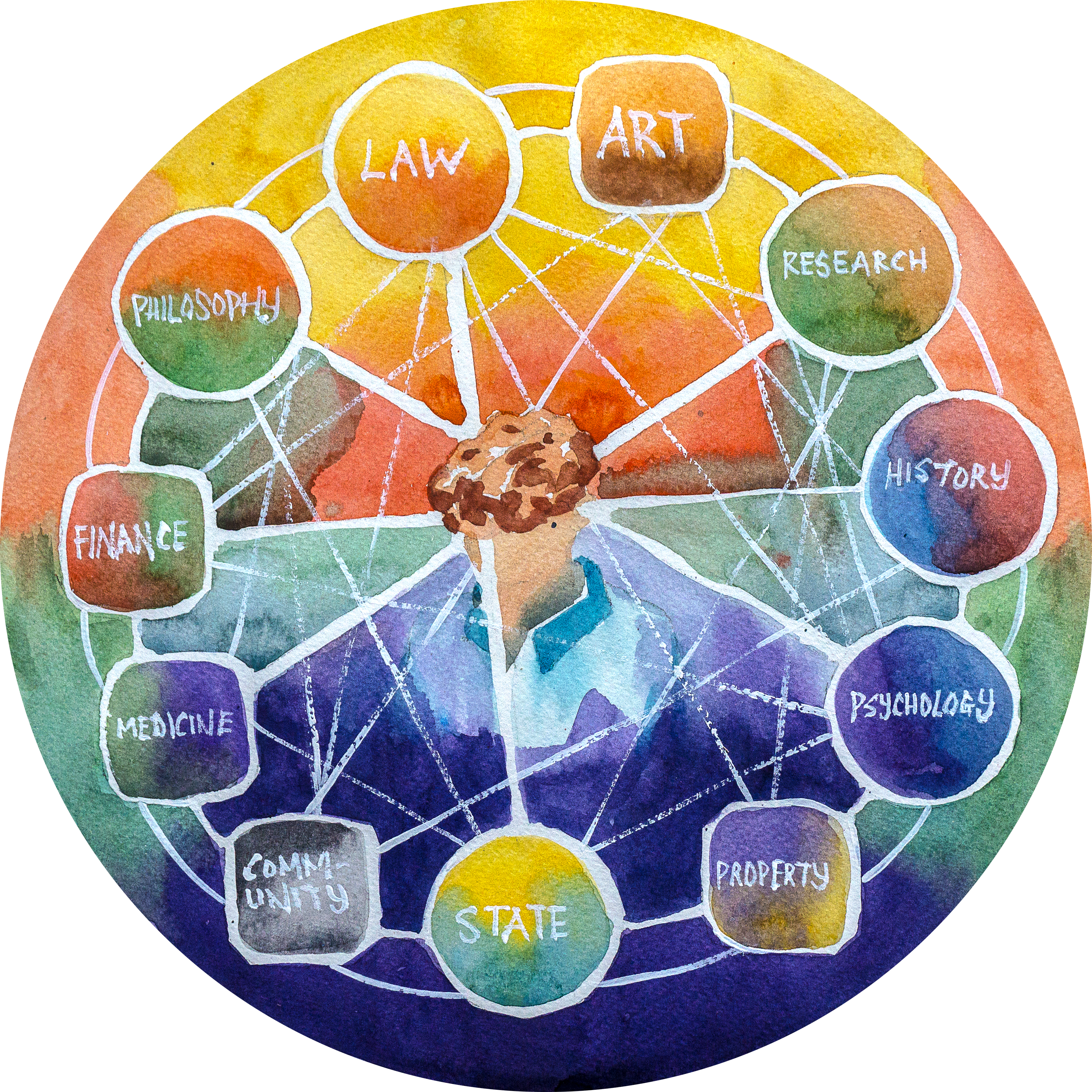This is an old chestnut from my father.
I heard this from college all the way into practice.
It is a cliché to me because I have so absorbed it to the point I enjoy reading around a subject more than reading about the subject itself. Some call this procrastination; there have been times I was tempted to agree.
This advice has led me to discover delightful warrens of legal esoterica and broaden my horizons. It has broad application. This is how I understood it.
First, we must know the subject matter itself to a satisfactory degree; that satisfaction is a personal matter. Second, we identify and acquaint ourselves with matters ancillary and related to the subject matter. I think of it as a learning odyssey.
Two examples to illustrate the idea.
Example 1. Bringing a summary judgment application pursuant to Order 14 (“O 14”) of the Rules of Court 2012 (“RC2012”). Clearly, we should acquaint ourselves with O 14 and the case law relating to it. The advice, however, demands we do not end our research there. How far or deep we go is up to us.
We may consider reading about O 14A RC2012 because we should know what the difference is and why an application under that provision is inappropriate. After all, their numbers are close to each other. We may want to gauge the courts’ general outlook on applications for interlocutory judgments and so read up on similar provisions such as O 18 r 19, O 27 r 3, O 33 r 2, O 81 and O 89 RC2012 and the domestic case law about them.
That may help us appreciate whether the court’s decisions on O 14 are consistent or deviate from their general outlook on applications for interlocutory judgments. We may then cast our net into international and commonwealth waters to consider the court’s approach in other jurisdictions and see how close or distant we are from them. This is reading around the O 14 provision.
We could then consider the procedural and practical aspect of O 14.
Because we can only file an O 14 application after the defendant enters an appearance, we should so consider O 12 and 13 RC2012, which relate to entry of appearances by a defendant. Since an O 14 application is filed by way of a notice of application, which is heard in chambers, and is supported by an affidavit, Orders 32 and 41 RC2012 are engaged as these provisions relate to applications in chambers and affidavits respectively. Whatever the outcome, an order has to be prepared; so O 42 RC2012 is relevant. The judgment has to be filed, digitally uploaded, and later physically manifested (well, not so much anymore) so O 63, 63A and 91 (together with Appendix B) RC2012 are worth a look.
To only know the provision or “subject matter” itself is usually insufficient; to have a fuller appreciation of it requires us to understand the context in which it operates as well.
Example 2. The subject is legal advocacy. Reading around it entailed considering other areas which lead me to other related areas of interest and so on to the point it recalled Frost’s lines in The Road Not Taken:
Yet knowing how way leads on to way,
I doubted if I should ever come back.
The most obvious source to start with would be the classic manuals about legal advocacy. These are usually written by experienced advocates and judges. They talk about what works for them and by inference most other judges. Much time is spent on techniques they have found effective and others have remarked on. They tend to be anecdotal but are not any less valuable for it.
The first thing that can be said about legal advocacy is that it is a performance – an oral or a written one. Where the former is concerned, learning how actors and other types of performers get ready for their performance and conduct their performance is of interest. From here we can learn how to be physically and psychologically fit and ready to perform in court. Where the latter is concerned, visual presentation is the priority and so visual design, aesthetics and the like become relevant. That Baskerville was declared as the font “that promotes, engenders a belief a sentence is true… Or at least nudges us in that direction…” would be of interest.
Reading around legal advocacy would mean entering the realm of persuasion because that is the purpose of legal advocacy: to persuade the decision maker to decide in our favour by proper means. There are no legal professors or arguments in the realm of persuasion. Instead, the names like Robert Cialdini and Robert Levine loom large instead because persuasion relates to:
… the process by which a person’s attitudes or behaviour are, without duress, influenced by communications from other people. One’s attitudes and behaviour are also affected by other factors (for example, verbal threats, physical coercion, one’s physiological states).
Brittanica.com
Persuasion encompasses legal arguments presented and relates more to the performance of advocacy. And because we are trying to persuade a decision maker, we need to understand how people in general make decisions. For that cognitive psychology becomes relevant.
Cognitive psychology is the scientific study of mental processes such as “attention, language use, memory, perception, problem solving, creativity, and thinking”.
Wikipedia
Those well known in this area (from a consumer book perspective, anyway), Daniel Kahneman, Dan Ariely, Steven Pinker, and Daniel Levitin. There are many, many more but these are just to give a sense of it. The lessons they tell us from their studies will help inform our advocacy performance and strategy.
Because the intellect and emotions are engaged when we have to decide something of importance, emotional intelligence as articulated by Daniel Goleman becomes relevant; the cognitive biases and deficiencies we suffer from by virtue of being human should be identified and managed, Rolf Dobelli has provided an excellent starting point in his book The Art of Thinking Clearly; and even when a decision should be made becomes a worthy area of study, see Daniel H. Pink’s book When, The Scientific Secrets of Perfect Timing, who, amongst other things, cautions making decisions in the afternoon when our circadian rhythm is at its lowest point i.e. about 7 hours after waking up; we are not at our sharpest then.
Now, knowing that piece of information, as an advocate I will want my case heard as early as possible. If I were a corporate lawyer, I would not schedule, where possible, a meeting to discuss important matters of a deal around that time. For example.
I could go on and tie in many other areas that would be a related area of study for legal advocacy: its historical developments, its variations in the different legal commonwealth countries, the design and architecture of the courtroom itself, the teaching of advocacy itself which then puts us in touch with theories of learning, etc. The question, as I posed earlier, is just how far and deep we want to go.
I find time and time again that the more I read around a subject the more I find that subject inevitably related to everything else.
Related Posts
- Get Legal Advice Early
Some of you may have caught the news about the 72 year old, Dolly Ng,…
- Written Advocacy Tip: Break it down
Legislation is not an easy read, even for lawyers and judges. Sometimes I feel it…
- Advocacy Tip: Getting off the ground
If there is one thing I enjoy more than advocacy books written by well known…
- Beware of stock standard advice
When I started out my practice in my father's firm a great many counseled me…
- Writing Standards
When I was fourteen, my father passed me a draft essay he wrote; he was…









1 thought on “ ‘Read around the subject.’”